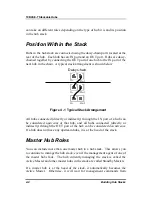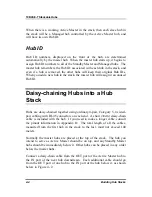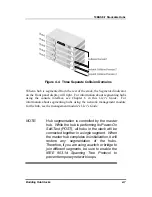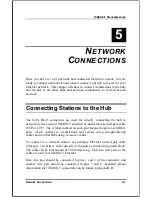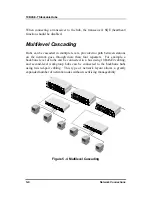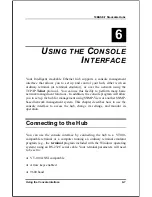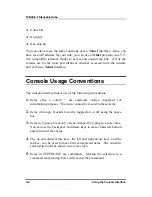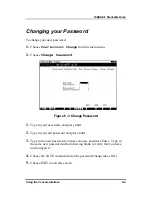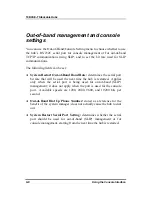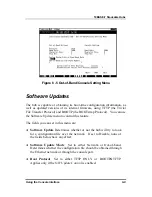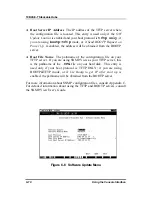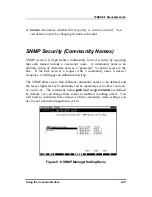
10BASE-T Stackable Hubs
Using Thin Coaxial Cabling
With the addition of a 10BASE2 transceiver connected to the AUI port at the
rear of the hub (as described in Chapter 3), you can cascade the hub to other
hubs or stations using thin coaxial cabling. This method of cascading hubs
gives additional flexibility over using twisted-pair cable, since you can
cascade up to thirty hubs on a single thin coaxial cable segment. The entire
coaxial segment may be up to 185 meters long.
Each device on the thin coax segment needs to have a BNC port or use a
10BASE2 transceiver. The cables should be connected to the BNC ports
using BNC T-connectors, and there should be 50 ohm terminating resistors
on each end Make sure that you leave at least 0.5 meters of coaxial cable
between any two nodes on the thin coaxial cable segment.
Using Fiber or Thick Coaxial Cabling
Similarly, transceivers connected to the AUI port can be used for connecting
thick coax Ethernet (10BASE5) or fiber optic cabling (FOIRL or 10BASE-
FL) to the hub.
A thick Ethernet trunk can be up to 500 meters long (preferably a single
piece of cable), and should have 50 ohm terminating resistors at each end.
The cable shield should be grounded at one end. 10BASE5 transceivers
usually tap directly into the coaxial cable; taps should be placed at 2.5 meter
intervals, and you can have a maximum of 100 taps on a single cable
segment. You can connect the transceiver to the hub's AUI port using an
AUI cable up to 50 meters long.
Using a fiber optic transceiver, you can link to another hub or hub stack up
1000 meters away using FOIRL (Fiber Optic Inter-Repeater Link), or up to
2000 meters away using 10BASE-FL. The fiber optic transceiver should be
inserted into the AUI port. Two fiber optic cables are required; the transmit
line of each transceiver should be connected to the receive connector of the
other.
Network Connections
5-5




